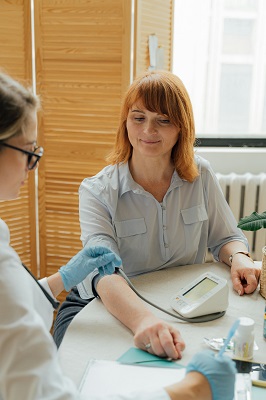
Women’s health is a complex and multifaceted topic that encompasses a wide range of biological, social, economic, and cultural dimensions. It has been historically neglected, with research predominantly focusing on male health, yet women face unique health challenges that require dedicated attention. From reproductive health to gender-specific diseases, women’s health is vital not only to the individual but also to the larger community, as healthy women contribute significantly to society’s growth and stability. In this essay, we will explore the importance of women’s health, discuss the challenges women face in maintaining their health, the progress made in recent decades, and what more needs to be done to address health disparities that exist.
The Unique Aspects of Women’s Health
Women’s health is shaped by biological, social, and environmental factors. Some of the most notable differences include reproductive health, hormonal variations, and the greater burden of certain diseases such as osteoporosis and autoimmune conditions. Additionally, women face unique health concerns related to pregnancy, childbirth, and menopause, which bring about changes in the body and require careful attention.
- Reproductive Health: Reproductive health is central to women’s overall health. This includes menstruation, fertility, contraception, pregnancy, childbirth, and menopause. Each stage of a woman’s reproductive life presents its own health risks and challenges. For instance, conditions such as polycystic ovary syndrome (PCOS) and endometriosis can significantly impact a woman’s ability to conceive or lead to painful symptoms. Access to family planning and safe abortion services remains a contentious issue in many parts of the world, highlighting the need for reproductive rights and safe practices.
- Hormonal Health: Women’s health is heavily influenced by hormonal fluctuations, particularly estrogen and progesterone. These hormones affect a range of bodily functions, from mood regulation to bone density. Hormonal imbalances can lead to various conditions such as thyroid disorders, depression, and menstrual irregularities. The transition into menopause, which occurs in most women between the ages of 45 and 55, is a major life stage that brings hormonal shifts, hot flashes, sleep disturbances, and a higher risk for cardiovascular diseases. Hormonal health, thus, requires special attention and management through lifestyle changes or medical intervention.
- Bone Health: Osteoporosis, a condition characterized by weak and brittle bones, disproportionately affects women. This is due to the fact that women have smaller bones than men and experience a drop in estrogen during menopause, which accelerates bone loss. Osteoporosis can result in fractures, especially in the hip, wrist, and spine, which can have serious health consequences. Preventive measures like calcium and vitamin D intake, along with weight-bearing exercises, can help reduce the risk of this condition.
- Mental Health: Women are more likely than men to suffer from certain mental health conditions such as depression, anxiety, and eating disorders. Hormonal fluctuations, societal pressures, and gender roles contribute to these disparities. Postpartum depression, in particular, affects a significant percentage of women after childbirth, and often goes undiagnosed or untreated. Mental health is closely linked to physical health, and addressing women’s mental well-being is just as important as focusing on physical health.
- Autoimmune Diseases: Women are disproportionately affected by autoimmune diseases, conditions where the immune system mistakenly attacks the body’s tissues. Diseases such as lupus, rheumatoid arthritis, and multiple sclerosis are more common in women than men. The reasons for this imbalance remain unclear, but it is thought to be related to hormonal and genetic factors. Because autoimmune diseases can be difficult to diagnose and have a range of symptoms, early detection and personalized care are crucial.
Challenges Women Face in Maintaining Their Health

Women face several barriers to maintaining their health, some of which are systemic, while others are personal or social. Understanding these challenges is vital in order to improve women’s health outcomes.
- Access to Healthcare: A major barrier to women’s health is access to quality healthcare. In many parts of the world, especially in low-income and rural areas, women have limited access to healthcare services. Lack of insurance, inadequate healthcare infrastructure, and cultural or societal barriers can prevent women from receiving the care they need. Even in wealthier countries, women of color and low-income women may face disparities in access to healthcare, leading to poorer health outcomes.
- Health Literacy: Health literacy—the ability to understand health information and make informed decisions—is another challenge for many women. Women often make the majority of healthcare decisions for their families, yet they may lack sufficient knowledge to navigate complex medical systems, understand medical terminology, or advocate for their own health. Educational initiatives that improve women’s health literacy can help empower women to make better decisions regarding their own health and the health of their families.
- Gender Discrimination and Bias in Healthcare: Gender bias in healthcare remains a significant issue. Studies have shown that women are less likely to receive the same quality of care as men for conditions like heart disease, despite the fact that women are just as likely to suffer from these conditions. This bias is partly due to the historical lack of female representation in medical research, as many clinical trials and studies were predominantly conducted on male subjects. As a result, women’s health issues are often under-researched or misunderstood, leading to misdiagnosis or ineffective treatment.
- Reproductive Rights and Autonomy: A woman’s right to make decisions about her own body is a fundamental aspect of her health. Yet, in many places around the world, reproductive rights are restricted. Legal and social barriers to contraception, abortion, and comprehensive sex education disproportionately affect women, particularly in countries where access to such services is limited. The ability to control one’s reproductive health is directly tied to a woman’s overall health and well-being, influencing everything from physical health to mental and emotional stability.
- Cultural and Societal Expectations: In many cultures, women are expected to prioritize the needs of others—whether it be their children, spouses, or elderly family members—at the expense of their own well-being. This social expectation can lead to neglect of personal health needs. Women often face pressures to maintain certain appearances, leading to unhealthy dieting practices or overexercising. Additionally, caregiving responsibilities can affect women’s mental and physical health, especially when they are expected to take on most of the emotional and physical labor of the household.
Progress in Women’s Health
Despite the numerous challenges, significant progress has been made in advancing women’s health. Over the past few decades, research, healthcare policies, and public awareness have all contributed to improving women’s health outcomes.
- Reproductive Health Rights: One of the most significant advancements in women’s health has been the progress in reproductive health rights. The introduction of oral contraceptives in the 1960s gave women greater control over their fertility and family planning, allowing them to pursue careers, education, and economic independence. In many countries, there has been increased access to maternal health services, reducing maternal mortality rates. Efforts to legalize abortion in many places have given women more autonomy over their reproductive health.
- Health Campaigns and Education: Public health campaigns and educational initiatives have led to improved awareness about women’s health issues, particularly in the areas of breast cancer, cervical cancer, and mental health. Early detection of conditions like breast cancer through self-exams and mammograms has increased survival rates. Mental health campaigns have also helped reduce stigma and encourage women to seek help for conditions like depression and anxiety.
- Scientific Research and Advancements: There has been an increasing focus on female-specific health issues in medical research. Advances in the understanding of female hormones, reproductive health, and autoimmune diseases have led to more targeted treatments. The development of medications that address the specific needs of women, such as hormone replacement therapy for menopausal symptoms, has helped improve quality of life for many women.
- Policy and Legal Advances: Policies promoting gender equality in healthcare, such as the Affordable Care Act in the United States, have expanded women’s access to preventative care, including cancer screenings, contraceptives, and maternity care. The increased representation of women in leadership roles in the healthcare sector has also contributed to policies that better address women’s health needs.
Moving Forward: What More Needs to Be Done
Despite the progress made, there is still much to be done to ensure that all women can achieve optimal health. Key areas for improvement include:
- Gender-Specific Research: More research is needed to understand gender-specific health issues and how diseases affect women differently than men. This includes studying the impact of gender on the development of conditions such as cardiovascular disease, diabetes, and cancer. It is crucial that women’s health issues are studied in-depth, with clinical trials that include female participants.
- Access to Care: Ensuring that all women have access to quality healthcare is essential. This requires addressing the systemic barriers to healthcare access, including cost, availability of services, and transportation. Special attention must be given to marginalized women, such as those living in rural areas or in low-income communities, to ensure they receive equitable care.
- Education and Empowerment: Educating women about their health and empowering them to make informed decisions is vital. Health literacy programs should be expanded, and women should be encouraged to advocate for their own health needs. Providing women with the knowledge they need to make choices about their reproductive health, mental well-being, and chronic conditions will have long-lasting positive effects on public health.
- Policy Changes: More needs to be done to protect women’s reproductive rights and ensure that women have autonomy over their bodies. Policies that provide access to affordable contraception, comprehensive sex education, and safe abortion services are essential for women’s health. Legal protections should also be strengthened to combat gender discrimination in healthcare.

Conclusion
Women’s health is a critical issue that deserves more attention and resources. While progress has been made, there are still significant challenges to overcome, including disparities in access to care, gender bias in medical research, and the need for better education and empowerment. By addressing these challenges and investing in women’s health, we can create a healthier, more equitable world for women and future generations.
FAQ:
1. What are the common health challenges women face?
Answer:
Common health challenges women face include reproductive health issues (like menstrual disorders, pregnancy-related complications, and menopause), mental health concerns (such as anxiety and depression), heart disease, osteoporosis, and breast cancer. Gender-specific health needs, access to healthcare, and societal expectations also impact women’s health.
2. How has women’s health care progressed over the years?
Answer:
Over the years, significant progress has been made in women’s health, particularly in reproductive healthcare, maternal health, and breast cancer awareness. Improvements in medical research, access to contraceptives, early detection methods, and healthcare policies have contributed to better health outcomes and increased life expectancy for women.
3. What are the main barriers to women’s access to healthcare?
Answer:
Barriers to healthcare access for women include financial constraints, lack of education, limited access to healthcare services in rural areas, cultural or societal stigma, and inadequate insurance coverage. These barriers often prevent women from receiving timely and necessary care, leading to health disparities.
4. How does reproductive health affect women’s overall well-being?
Answer:
Reproductive health is essential for women’s overall well-being as it influences physical, emotional, and social aspects of their lives. Access to contraception, family planning, and safe pregnancy care enables women to make informed choices, maintain better health, and prevent or manage reproductive health disorders such as polycystic ovary syndrome (PCOS) and endometriosis.
5. Why is mental health a significant concern for women?
Answer:
Mental health is a significant concern for women due to higher rates of anxiety, depression, and stress-related disorders. Biological factors (such as hormonal fluctuations during menstruation, pregnancy, and menopause), societal pressures, and gender roles can contribute to mental health issues. Prioritizing mental health care is crucial for improving overall health and quality of life for women.
6. How can early screening and regular check-ups impact women’s health?
Answer:
Early screening and regular check-ups are essential in identifying potential health issues early, allowing for timely intervention and better treatment outcomes. Screenings for conditions like breast cancer, cervical cancer, and osteoporosis, along with routine monitoring of blood pressure and cholesterol levels, help prevent diseases or detect them at an early, more treatable stage.
7. What are the most effective solutions for improving women’s health globally?
Answer:
Effective solutions for improving women’s health include increasing access to quality healthcare services, implementing educational programs about sexual and reproductive health, promoting gender equality, encouraging preventative care, and addressing mental health concerns. Public health campaigns, better healthcare policies, and partnerships with global organizations can also enhance healthcare systems and outreach.
8. How can we raise awareness about women’s health issues?
Answer:
Raising awareness about women’s health can be done through public education campaigns, social media platforms, support from healthcare professionals, and community engagement. Increasing visibility of women’s health issues, especially those that are underreported, can drive conversations, reduce stigma, and promote better access to care and resources.
